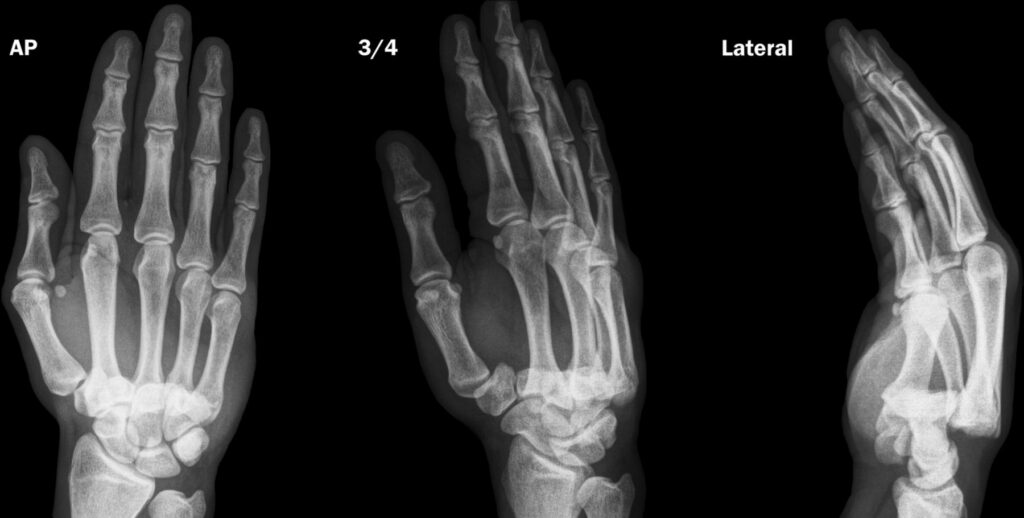So, when it comes to replacing your thumb joint, there are a couple of routes a surgeon might take: either a tendon transfer or an artificial replacement. And there are some newer techniques in the mix, like using a wire or suture as a sling to prop up your thumb.
As you age, the old thumb joint can become a hotspot for arthritis. Those ligaments holding it all together might loosen up, leading to a bit of slippage. Or, the little cartilage pad between the wrist joint (trapezium) and the base of the thumb joint (first carpometacarpal) might just wear out.
All this can spell stiffness, pain, and a bit of trouble moving your thumb about. But don’t worry, a doctor can step in and sort things out with carpometacarpal (CMC) arthroplasty, otherwise known as total thumb joint replacement.
For this surgery, the surgeon can either plump up the joint with a ligament from your own body or pop in some metal, silicone, or plastic prostheses. If they go for the ligament option, it’s called ligament reconstruction and tendon interposition (LRTI). If they opt for the prosthesis, it’s dubbed a total joint replacement.
And there’s a whole range of tweaks and variations they might recommend. This article dives into the ins and outs of different options for CMC arthroplasty.
Ligament reconstruction and tendon interposition (LRTI) During LRTI, the surgeon gets rid of the dodgy bone bits and maybe even part or all of the trapezium bone in your wrist. Then they fashion a cushion out of your own ligament to keep the remaining bones apart.
Now, LRTI has been around the block for a while, often doing a solid job of easing symptoms and getting your thumb back in the game. But it’s not all sunshine and rainbows:
The recovery can be a bit of a slog. Your thumb might end up a tad shorter. And it might not be quite as strong or nimble as before. Plus, those benefits might fade with time as the pain and glitches creep back in.
Total joint arthroplasty With total joint arthroplasty (aka total joint replacement), it’s out with the old, in with the new. They swap out the worn-out bone surfaces for a shiny new prosthesis made of either pyrocarbon or metal. And they chuck in some synthetic spacers to keep things ticking over nicely.
If you’re a young go-getter putting a lot of strain on that joint, they might lean towards the synthetic spacers since metal prostheses can buckle under the pressure.
Most CMC arthroplasties go off without a hitch. Sure, there are a few things that can up the chances of complications, like diabetes or being on dialysis. But a study from 2019 found that complications in the first month after surgery were few and far between.
And according to a 2017 study, a whopping 89% of folks who’d had a total joint replacement were pretty chuffed with the results.
Hematoma distraction arthroplasty Another option on the menu is hematoma distraction arthroplasty (HDA). This one involves waving goodbye to the trapezium and popping in a wire (known as a Kirschner wire or K-wire) to keep your thumb on lockdown for 4 to 6 weeks while it heals.
A study from 2021 found that HDA seemed to trump LRTI after a year. But the jury’s still out on this one. Some experts aren’t totally sold on it yet, and there aren’t loads of specialists trained in the technique.
But removing the trapezium comes with its own set of risks, like a weaker pinch and a potentially stubbier thumb.
Suture suspension arthroplasty Suture suspension arthroplasty (SSA), also known as suture button suspensionplasty (SBS) or TightRope, is the new kid on the block. After they’ve binned the trapezium, the surgeon hooks up the metacarpal of your thumb to the metacarpal of your index finger with a suture attached to a button.
This one’s less invasive and quicker to bounce back from. And a study from 2023 found that it led to better long-term improvement in symptoms compared to LRTI. Plus, there was less risk of the metacarpal caving in after SSA.
A systematic review from 2022 found that SSA and LRTI had similar outcomes, but more research is needed to say for sure.
So, which method reigns supreme for CMC surgery? Well, it all depends on a few things:
Your age. How much strain you put on your thumb joint. The state of your poor, beleaguered thumb joint. Any existing conditions or injuries. Oh, and whether your dream outcome is actually doable with the chosen procedure.
A joint replacement might give you better function and a thumb that looks more like it should. But it’s pricier and more likely to throw up complications. And if you’re giving that thumb a workout, the prosthesis might call it quits sooner rather than later.
Here’s a handy table to help you weigh up LRTI against total joint replacement:
| LRTI | Total CMC Joint Replacement |
|---|---|
| For less battered joints | For the really knackered ones |
| Cheaper | Pricier |
| Fewer hiccups | More chance of hiccups |
| Not as much movement | Better range of motion |
| More obvious differences in appearance | Looks more like the real deal |
HDA and SSA are simpler affairs that might deliver similar results. But there’s still some uncertainty swirling around their effectiveness.
So, have a natter with a specialist hand surgeon about which option’s the right fit for you.
- Refreshing Revelations: Melo’s THC Beverage Journey - May 13, 2024
- Comparing Your Options for Carpometacarpal Arthroplasty - April 23, 2024
- CBD Oil Pets By Just CBD-Paws-itively Blissful: A Fur-tastic Review of Just CBD’s CBD Oil Pets - March 4, 2024
